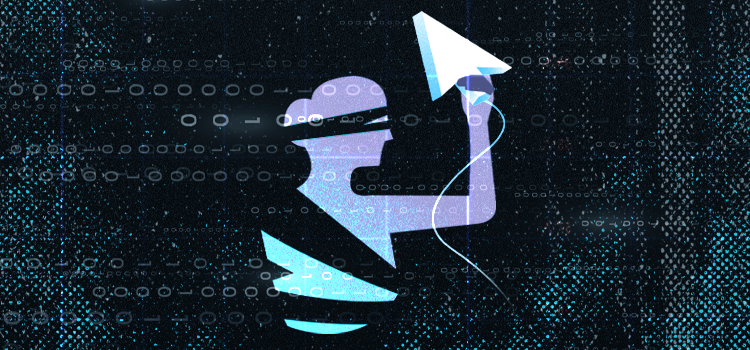December 22, 2020
Justice in a Virtual World: Will a Post-Lockdown Move Online Make Justice More Accessible?

Laura O'Driscoll
Content Manager
Even before Coronavirus struck, there were calls for greater online facilitation of legal processes. According to the Organisation for Economic Co-operation and Development (OECD), less than 50 percent of people live under the protection of the law. In contrast, more than 50 percent of people have access to the internet in one way or another. That’s to say, globally, justice is less accessible than the internet. Where justice is accessible in theory, in practice, it remains elusive: civil dispute resolution is too long, too expensive, and too convoluted for most people to understand or afford.
In addition to this inaccessibility, cross-border dispute resolution has struggled to keep pace with the rapid globalization of commerce. Coronavirus lockdowns, however, have started to force change in reluctant areas. By necessity, the legal profession around the globe has had to adapt to a suddenly and drastically different environment. Restricted mobility and limitations on face-to-face interaction have prioritized technological innovations as a means to remain operational. From e-filing to remote hearings, secure platforms for video conferencing, extraction tools, redaction tools, and enhanced digital evidence collection, the virtual shift has shaken up traditional processes across the board.
Perhaps the most important changes are in the handling of information and communication. Dispute resolution, at its most basic, requires mastery in these two fundamental areas. In a globalized world, and particularly in the context of a global pandemic, mastery means having sufficiently advanced information and communication technologies to operate seamlessly across borders. Open Source Intelligence (OSINT) technology is a critical component of this borderless landscape: bridging the gap between traditionally human processes and meaningful technological counterparts.
What is a Virtual World, and what does it mean for Law?
The internet has changed the way the world does business. The most successful business models are increasingly digitized, requiring little to no material infrastructure. As media innovator Tom Goodwin noted in 2015: Uber owns no vehicles; Facebook creates no content; Alibaba has no inventory; Airbnb owns no real estate; Transferwise, Monzo, and Revolut have no bank accounts and hold no actual money. In other words, business has found a hundred different ways to permeate, blur, or bulldoze international boundaries. And with coronavirus lockdowns taking a hammer to the value of physical infrastructure, this virtual domain is rapidly becoming the main arena for global commerce.
Legal proceedings, meanwhile, remain broadly anchored to the jurisdictional ball-and-chain and need to find more innovative ways to keep pace with the breakneck march of commerce. In theory, this means capitalizing on emerging technologies and frameworks to transcend challenges of jurisdiction, enforcement, procedural and economic efficiency. In practice, this means a lot more than putting video technology into courtrooms. At its most exciting - and challenging - it presents an opportunity to rethink our frameworks and mechanisms for dispute resolution as a whole and to adapt them to the needs of a twenty-first century, globalized society.
Dispute Resolution in a Virtual World
Online Dispute Resolution (ODR) has been gaining ground for years: for example, in the form of Canada’s Civil Resolution Tribunal, the European Commission’s Online Dispute Resolution platform, or on eBay, where 60 million trade disagreements are resolved each year. The potential long-term benefits of such concepts are immense. Not only can they help prevent lockdowns from adding to pre-existing backlogs in the justice system, but they have the potential to make justice as a whole more accessible in terms of money, time, mobility, and intelligibility.
In essence, ODR uses technology to facilitate, improve, or supplement traditional Alternative Dispute Resolution (ADR) methods. It can be either “technology-based” or “technology-assisted.” Technology effectively takes over most aspects of negotiation in the former, using algorithmic power to guide parties through a mutually optimized solution. Technology-assisted ODR uses information and communications technologies to support the interaction between the parties and facilitate human-based approaches such as investigation, questioning, and the communication of options and findings.
At the moment, ODR is heavily weighted towards online retail and business to consumer (B2C) transactions, most likely because what starts online is perceptually easier to resolve online. It is also largely confined to simpler cases, with greater complexity arguably requiring more significant human input.
But as traditional ADR increasingly incorporates newer technologies into normal proceedings, the separation between online and conventional arbitration is rapidly narrowing. Coronavirus restrictions have turbo-charged this development, creating an urgent need for innovative technologies to support ADR, particularly in cross-jurisdictional arenas. While it is unlikely that complex proceedings will move entirely online in the near future, we will see increasing amounts of hybrid engagements: in which elements of the process are shifted into or facilitated via the digital sphere.
Investment in newer technologies in conservative sectors can carry the risk of being seen as a matter of style over substance. Effective incorporation of ODR into conventional ADR methods isn’t about dazzling with gadgetry; it’s about applying the latest technologies to add demonstrable value and augment traditionally human approaches in a meaningful way. Where this happens, the potential “real world” applications for a hybrid model abound: from interpersonal disputes or marital separation through to personal injury, insurance, and contract disputes, and even interstate conflict.
Information Drives Action: the OSINT Advantage
With this in mind, the critical question becomes: where can technology add demonstrable value? Communication is, of course, a vital element of dispute resolution. But no legal action or interaction is possible, or indeed advisable, without a solid foundation of information. And in the context of a global pandemic - with face-to-face interactions reduced in frequency, potency, or indeed both - proceedings will have to rely less on parties’ interactions and more on evidentiary written submissions. Effective information collection and management, in this context, is paramount to success and yet fraught with challenges. Time is of the essence; caseloads are high, new risks to security and confidentiality abound, personal interactions are limited, and mobility is restricted. When information is hard to access, nuance is the first thing to get lost: and, particularly in more complex cases, a small informational nuance can mean the difference between success or failure.
In this climate, practitioners will need to collate, understand, and utilize large volumes of information, in a court-compliant manner, at pace, and with limited resources. OSINT technology will play an important role in adapting the legal world to these challenges.
Used skilfully, the right OSINT tools can exploit artificial intelligence (AI), analytics, and predictive coding to boost the transparent, efficient, and intelligent collection of evidence. Information from a vast and disparate range of sources can be quickly and effectively identified, analyzed, and synthesized into court-ready reports and evidence packets - all while maintaining a clinical level of separation between work on different ongoing cases.
Cutting edge AI enhances the “human” framework for complex digital research: for example, using association and behavioral analysis to build a more nuanced, responsive, and dynamic mechanism for continued information collection and development. The exploitation of all layers of the internet (surface, deep, and dark web) can reveal the “hidden face,” or inner workings of a subject, that might otherwise only be identifiable through extensive exploitation of human sources.
Issues of jurisdiction and limited cross-border mobility are reduced by the broad geographical scope and nuanced linguistic capabilities of certain OSINT mechanisms. For example, it is possible to scan simultaneously for a given phrase in multiple languages, alongside common nicknames, homonyms, and misspellings, and allowing for both known and unknown variables.
It is hard to argue against mounting evidence that the future of the legal sector, just like the world of commerce, lies increasingly in a fluid, virtual, globalized domain. Practitioners who fail to capitalize on technological advances to access this domain risk falling behind as we move at pace into the “new normal” of the post-Coronavirus world.


